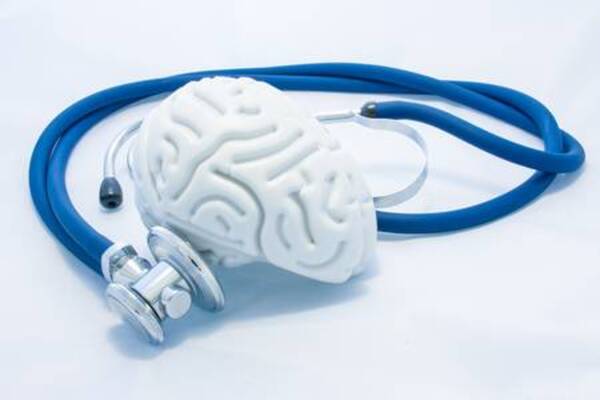Long QT syndrome


Overview
Long QT Syndrome is a disorder of the electrical system of the heart, similar to arrhythmia. It is an abnormality that delays the process of recharging of the cardiac cells, once they have been released by the electrical system of the heart. It causes fast chaotic heartbeats.
In Long QT Syndrome, the ventricles (lower chambers of the heart) take a very long time to release and contract. The name of this condition comes from the letters associated with the waveforms created by the electrical signals of the heart when recorded by the ECG (electrocardiogram). The intervals between the letters Q and T defines the whole action of the ventricles. ‘Long QT Syndrome’ thus means, the time gap between the points Q and T on the waveform are very long, even if it is just by fractions of a second.
In general, a prolonged QT interval can suddenly happen by everyday circumstances too, including:
- When startled by a loud noise
- Intense physical activity or exercises
- Intense emotions such as fright, anger or pain
But, in all of these instances, the heartbeat usually regains its normal contraction rhythm back quickly. Long QT Syndrome affects around one million people per year in India. If left untreated, half of the people with Long QT Syndrome could die within 10 years after the first symptoms of it being noticed. People at high risk of Long QT Syndrome include young children, teenagers and young adults with unexplained fainting, seizures, near drowning or with a history of cardiac arrest. It is generally inherited in most of the cases, but it can also be caused by some medications taken for other medical problems.
Causes
Long QT Syndrome is mainly an inherited disorder. Several genes have been clearly identified that affects the QT intervals, which means several varieties of Long QT Syndrome exist. Some of these have been associated with a high incidence of arrhythmiasand sudden death, which quite often occur in several members of the family. But there are some other forms of Long QT Syndrome which can be much less dangerous.
They can be broadly classified into three types: acquired, prolonged, and inherited.
- Acquired Long QT Syndrome: Long QT Syndrome can be acquired as side effects of medications. Acquired long QT syndrome is generally caused by certain medications and electrolyte abnormalities such as hypokalemia (low body potassium) or other such medical conditions. More than a hundred medications, many of which are common, can lengthen the QT interval in healthy people and cause acquired long QT syndrome, also known as drug-induced Long QT Syndrome.
Sometimes it’s also possible to have hereditary and acquired forms, both together. There are several types of medications that cause Long QT Syndrome, viz.

- Cholesterol-lowering medicines
- Certain diabetes medicines
- Augmentation cystoplasty
- Antiarrhythmic medicines (meds that regulate heartbeat)
- Certain antibiotics
- Antihistamines and decongestants
- Antidepressant and antipsychotic medicines
- Cholesterol-lowering medicines
- Diuretics (such as potassium or sodium)
- Some anti-nausea medicines
- Prolonged Q-T interval: An electrocardiogram (ECG) actually measures electrical impulses as they travel all through the heart. Patches with many wires attached to the skin measure these impulses, which are then displayed on a monitor or can also be printed on paper as waves of electrical activities.
This ECG measures electrical impulses as five different waves. Doctors have labeled these five waves with the letters P, Q, R, S, and T. The two waves labeled as Q through T show the electrical activity in the heart’s lower chambers called the ventricles.
The length between the start of the ‘Q’ wave and the end of the ‘T’ wave (i.e. QT interval) corresponds to the actual time it takes for the respective heart to contract and then refill with blood before the next contraction begins.
Doctors measure whether the QT interval is occurring in a normal amount of time. It is called a prolonged QT interval if the interval takes longer than normal to occur. QT interval takes into account the age, sex, speed, and regularity of the heart rate.
- Inherited Long QT Syndrome: So far, there are at least 17 genes that are associated with Long QT Syndrome, and there are hundreds of mutations within these genes that have been identified. Mutations in just three of these genes account for almost 75 percent of Long QT Syndrome cases, while the mutations in the other minor genes contribute to a very small percent of Long QT Syndrome cases.
There is about 20 percent of people who definitely have an inherited long QT syndrome but have a negative genetic test result. On the other hand, among families with genetically established Long QT Syndrome, between 10 to 37 percent of their relatives have a normal QT interval with a positive Long QT Syndrome genetic test.
There are supposedly two forms of inherited Long QT Syndrome:
- Romano-Ward Syndrome. This is a more common form that occurs in people who inherit only a single variant of genes from one of their parents.
- Jervell and Lange-Nielsen Syndrome. This is a rare form that usually occurs very early and is more severe. In this syndrome, children inherit the genetic variants from both of their parents. Such kids have long QT syndrome and also are born deaf.
Apparently, scientists have been investigating a possible link between long QT syndrome and sudden infant death syndrome (SIDS). They supposedly have discovered that almost five to ten percent of babies affected by the SIDS had either genetic defects or mutation for long QT syndrome.
Symptoms
The symptoms of Long QT Syndrome only occur when the patient develops an episode of dangerous tachycardia, and the degree of those symptoms depends on the length of time. If it is only momentary, then a few seconds of extreme dizziness might be the only symptom. If it persists for longer than 10 seconds, then syncope occurs. And if it lasts for much more than a few minutes, the victim shall never regain their consciousness.
But fortunately, most of the people with Long QT Syndrome types never really experience any life-threatening symptoms. They may only know of their condition after having an ECG for other reasons. Those who do experience may have the following symptoms:
-
- Abnormal heart rates/rhythm (called arrhythmia)
- Fainting (called syncope)
- Continuous fluttering in the chest
- Noisy gasping while asleep
- Seizures
- Heartburn
- Heart palpitations
- Irregular heartbeat
- Sudden cardiac arrest
- Sudden death
All of these symptoms above might start unexpectedly and may be triggered by reasons such as:
o Sudden noises
o Strenuous exercises
o A very slow heart rate while sleeping
Sometimes the symptoms might start as early as the fetus stage, during the first few weeks to months after their birth, sometimes after the age of 40, or sometimes never at all.
Risk Factors

- Children who are born deaf
- Blood relatives of family members with Long QT Syndrome
- Children and young adults who have had unexplained sudden death or syncope in their family members.
- Those who are taking Long QT Syndrome medications which can further prolong the QT intervals.
- People with low calcium, magnesium, potassium in the blood
Diagnosis
The following methods are commonly used to diagnose Long QT Syndrome.
- A standard ECG/EKG (electrocardiogram) is the best test for diagnosing Long QT Syndrome. The ECG machine records the electrical activity of the heart in waveforms, which shows a prolonged Q-T interval.
- An exercise EKG (known as a stress test) also can show an abnormal Q-T interval which may otherwise be quite normal during a resting EKG.
- Holter monitoring gets a continuous thorough reading of the heart rate and rhythm for over a 24-hour period (or longer), to check the QT intervals.
Treatment

The main treatments for Long QT Syndrome include lifestyle changes, medicines, and surgery.
- Lifestyle changes: Patients with Long QT Syndrome are suggested to participate in sports activities in moderation. Even exercising is ought to be done with friends or family to avoid conditions like fainting.
- Medicines: Beta-blockers are few of the most common types of medicines given to Long QT Syndrome Although they don’t cure Long QT Syndrome, they have been shown to drastically reduce or sometimes even prevent the symptoms.
- Surgery: When Long QT Syndrome causes ventricular fibrillation uncontrollably, one might need an ICD bladder surgery
, (implantable cardioverter defibrillator). It is a device that sends an electric shock to the heart to restore heartbeats to normal. - Instruments: For many people suffering from Long QT Syndrome, the implantable defibrillator provides the best treatment. It is a device that is ought to be used for patients who have survived mainly cardiac arrests and also for patients with syncope due to Long QT Syndrome..
For those patients who cannot tolerate beta blockers, a surgery called LCSD, left cardiac sympathetic denervation, may be performed.
Prevention
If one has inherited Long QT Syndrome, they must be careful about which medications they take. Some medications such as certain appetite suppressants, common antibiotics and decongestants might trigger dangerous heart rhythms. Doctors’ prescriptions and supervisions are always a must. Illegal drugs, like cocaine or amphetamines, pose a very serious risk for people with QT syndromes.
Always seek medical treatment immediately for illnesses that result in low blood potassium levels, especially if it is accompanied with a lot of vomiting and
diarrhea treatments Such illnesses might trigger the Long QT Syndrome. Doctors might advise patients not to take some specific drugs like diuretics which lowers blood-potassium levels.
Apart from the above situations, there are some people with Long QT Syndrome, mainly older adults who might not have had signs or symptoms of the condition for decades. Taking preventive measures is enough for such people, and treatments aren’t necessary.





